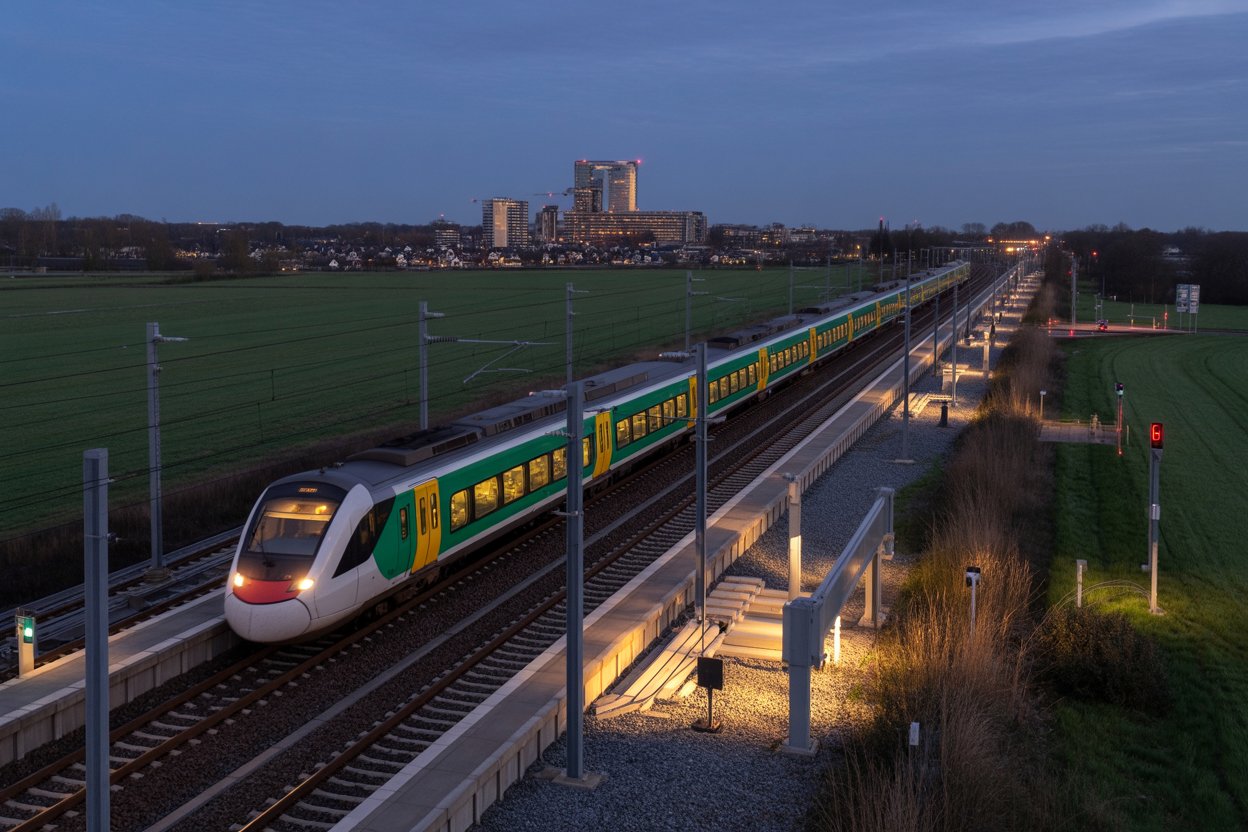Published on
October 25, 2025
A new project in the northeastern Netherlands is set to improve regional rail connectivity, particularly between Groningen, Emmen, Almelo, and Enschede, which borders Germany. The initiative aims to establish a seamless through route, bridging key cities and enhancing rail services in the region. As part of the Lower Saxony project, work is underway to assess the feasibility of upgrading and electrifying the rail network, with construction of new lines and infrastructure also included in the plans.
Project Scope and Upgrades
The Lower Saxony rail project involves a multi-faceted approach, including the electrification of the 18-kilometer Almelo – Mariënberg section, which has already received approval from the Dutch Ministry of Infrastructure and the Province of Overijssel. This upgrade will convert the section to electric operation using 1.5kV DC, with an anticipated start of electric service in December 2028. The total cost of this electrification effort is €75 million, and ProRail is now seeking contractors for the project.
In addition to electrification, the project includes the construction of a new 34-kilometer rail line between Stadskanaal and Emmen, which will connect with the existing network. Currently, the route between Veendam and Stadskanaal is used by a heritage railway, but the plans will modernize the infrastructure to support regular passenger trains.
Feasibility Study and Project Goals
The development phase includes a comprehensive feasibility study to determine the best approach for connecting the rail network in this part of the Netherlands. This study will also assess the potential benefits of the project, including improved public transport options, reduced journey times, and the potential to attract more passengers from road to rail.
Furthermore, the project is designed to integrate stations into the local communities along the route, ensuring easy access for passengers while improving cross-border connections with Germany. The Dutch government has allocated €2 billion for the project, with an additional €50 million from regional governments. The funding will primarily come from the resources initially set aside for the Lely line, which connects Lelystad, Heerenveen, and Groningen. However, due to uncertainties around the Lely line, funds have been redirected to this more immediate rail expansion.
Regional Impact and Future Connectivity
Once completed, the upgraded rail network will offer faster and more efficient transport for both local commuters and international travelers. The new connections between cities in the Netherlands and Germany will enhance trade, tourism, and mobility, fostering greater economic ties across the border. This is an important development, as it strengthens rail as a viable, eco-friendly alternative to road travel and increases the region’s competitiveness in both local and international contexts.
The project is scheduled to be completed in phases, with the final decision to proceed expected in 2028 after the feasibility study is finished. If approved, it will be a significant step forward in modernizing the Netherlands’ rail network and improving connections between the country and its German neighbors.
Conclusion: Building a More Sustainable and Efficient Rail Network
The Lower Saxony rail project represents a strategic investment in the future of transportation in the northeastern Netherlands. The combination of electrification, new lines, and improved connectivity to Germany will significantly enhance rail options for the region. With an eye on sustainability and efficiency, this project is poised to modernize the rail infrastructure, boost local economies, and provide a cleaner, faster alternative to road travel. As the planning and development progress, the project will play a crucial role in shaping the future of public transport in the region.
